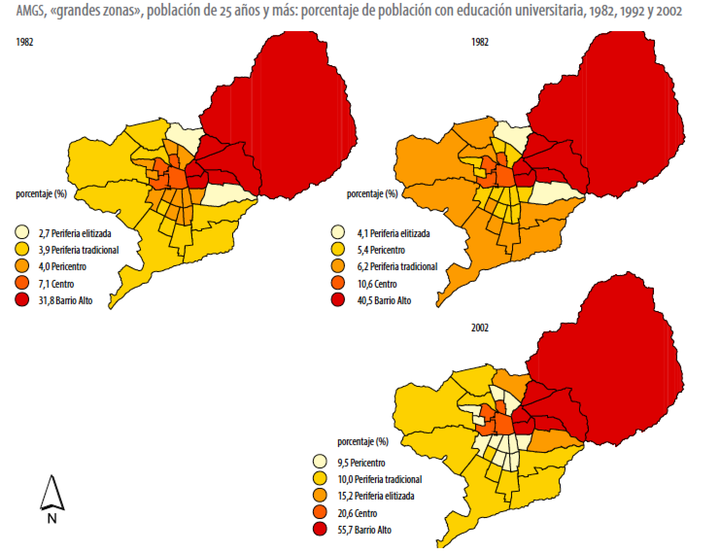¿Contribuye la migración interna a reducir la segregación residencial? El caso de Santiago de Chile 1977-2002

Abstract
In the context of controversy of the metropolitan transformations, social diversification of the periphery and trends of the socioeconomic residential segregation, we estimate the impact of internal migration on the educational composition of different intra-metropolitan areas and on the resulting residential segregation, measured by the dissimilarity index of several educational groups, in Santiago. The results show that migration foster socio-educational diversification in the periphery and it is key for the emergence of higheducation zones in historically disadvantaged areas of the periphery. But as opposed to the prevailing narrative, migration does not reduce residential segregation, because it decreases the proportion of high-education population in the inner-city and it increases this proportion in the affluent area.